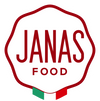Sardinia PDO saffron, unique and precious threads of red gold

Expanses of small lilac-coloured flowers and ruby-red threads moved by the wind: this is where the world's most precious spice, saffron, is born. In Sardinia this crop is an absolute protagonist: the island is in fact the first Italian region for the production of this wonderful spice. The area of San Gavino Monreale, in Medio Campidano, is the most important place for the cultivation of Crocus sativus, the flower from which saffron is obtained. In addition, Sardinian saffron is an excellent product, to the extent of having been awarded with the Protected Designation of Origin. This is why this saffron is so special.
How is saffron produced?
The production process of Sardinian saffron starts with a beautiful flower, the Crocus Sativus. This lilac-coloured flower is small and delicate and contains three precious red threads: the stigmas. Crocus bulbs are planted on fertile, well-worked soils with a slight slope. Between the end of October and the beginning of November the flowers begin to emerge from the ground; the pistils are soon ready for harvesting, which is done strictly by hand, on the same day, taking each individual flower from the ground before it opens. The flower must be treated with extreme delicacy: a very small quantity of saffron is obtained from each flower. As many as 200,000 flowers are needed to produce just one kg of this spice! This is why saffron is so precious, so much so that it is called "red gold".
The stigmas (or pistils) extracted manually from the flowers are then dried on wooden and/or paper supports by exposing them to mild heat sources, to obtain the product we all know. Before drying the stigmas, they are often moistened with extra virgin olive oil produced in Sardinia. This technique is called “stigma moistening”.
The PDO label: Sardinian Saffron Protected Designation of Origin
Sardinian saffron has been cultivated on the island for centuries. The variety of Crocus Sativus used is the result of an ancient selection process that began as early as 1600 B.C.; cultivation was brought to Sardinia by the Phoenicians a few centuries later. Saffron grown in Sardinia has organoleptic characteristics that differentiate it and make it unique. It has a strong flavour, high colouring and aromatic power, thanks to atmospheric conditions and the characteristics of the soil.
This is why, in 2006, Sardinian saffron gained important recognition, becoming a product with Protected Designation of Origin (PDO). This product is also protected by Slow Food, which has included it in the list of Sardinian Presidia products. Only saffron grown and produced in accordance with the technical specifications may bear the PDO label.
 |
How to use saffron in pistils (or stigmas)?Saffron of Sardegna PDO can only be sold in the form of whole pistils inside glass or tin containers. To use the pistils, it is necessary to pulverise them before adding them to dishes to give them their characteristic colour and taste. How do you pulverise the stigmas? By toasting them over a mild heat source, taking care not to burn them, then wrapping them in parchment paper and pressing them with the back of a spoon until a bright red powder is obtained. The properties of Sardinian Saffron PDOThe most expensive spice in the world has various beneficial properties, thanks to the presence of crocetin and crocin, which give it its red colour, and safranal, another substance found in the pistils. |
Saffron is rich in minerals such as phosphorus and potassium, as well as vitamin C and folate. Its known properties are its antioxidant and mood-regulating qualities and its benefits for the gastrointestinal tract: in fact, Saffron has an important eupeptic effect.
In particular, Sardinian saffron contains a higher quantity of crocin, crocetin and safranal than those produced elsewhere, which makes it even more beneficial to health.
Saffron in Sardinian cuisine
Since Sardinia is the Italian capital of saffron, its cuisine makes extensive use of this excellent product, which is the undisputed prince of many recipes, from fish starters to typical first courses (such as Malloreddus alla Campidanese and risottos), from desserts (such as Pardulas and ricotta cakes) to fresh pasta: saffron is often added to the mixture of fregola and malloreddus and to the filling of ravioli.
Saffron is a real treasure, an excellence that our island has been protecting for centuries, which colours traditional dishes and takes us to far-off times of care and love for the raw material.

